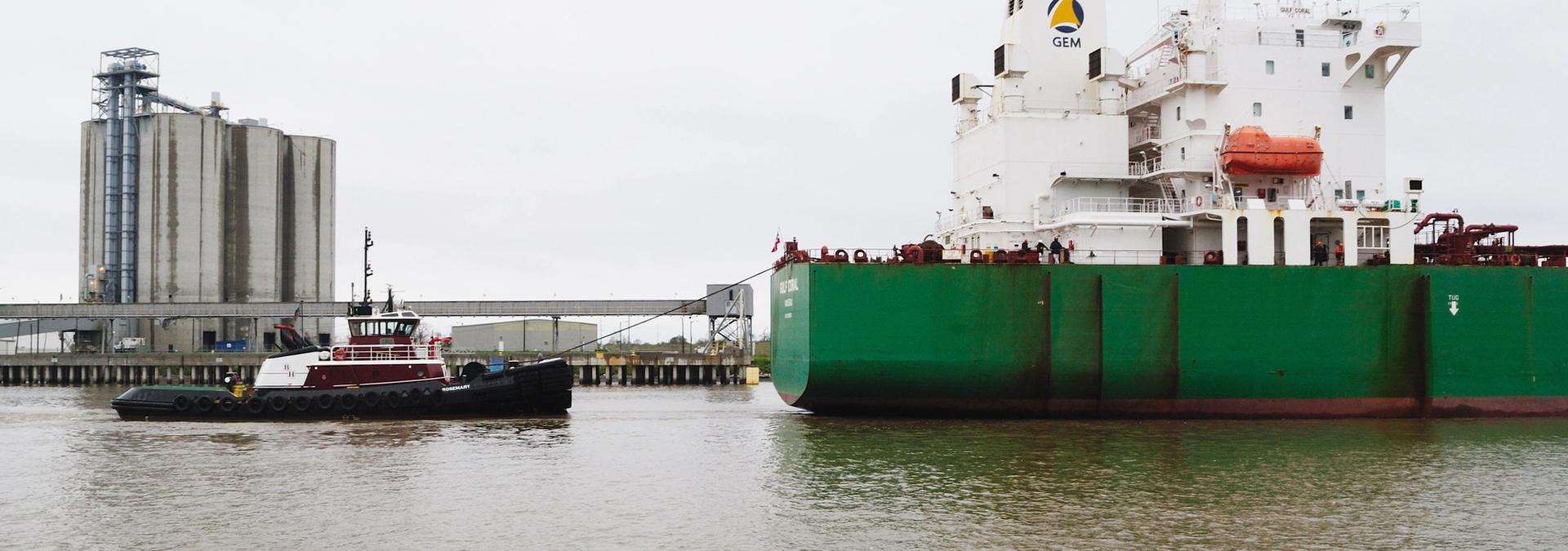
Port Houston wants to be an environmental leader, but their nearly $1 billion dredging project goes the wrong way
Dredging the Ship Channel with old, dirty, diesel-burning equipment to make it safer for ships ignores the dangers of air pollution to people.
The families who live near the Houston Ship Channel are exposed to too much air pollution. Tugboats burning dirty diesel fuel, heavy trucks coming and going at all hours of the day and dozens of oil refineries and other chemical facilities contribute to serious health problems like asthma, heart disease and cancer that change lives forever.
Now, Port Houston is moving full steam ahead to make it worse. The port is sponsoring a nearly $1 billion project to dredge the Ship Channel to make it easier and safer to navigate. But the project plans to use old, cheap dredges that will burn even more dirty diesel, dumping thousands of tons of extra toxic pollution on these families. How much pollution? It’s comparable to adding another refinery or power plant in their neighborhood — except that would have at least required an impact review and the best available pollution control technologies.
No one’s controlling this pollution. Tasked with protecting Texas’ air quality, the state environmental agency, the Texas Commission on Environmental Quality, approved the port-sponsored project. The U.S. Army Corps of Engineers, acting as the contractor, is weeks away from doing the same.
How did we get here? A year ago, as letters posted online show, TCEQ told the port all this new pollution would put it out of compliance for maximum allowable emissions. One way around that, however, was to require the port authority to buy what we estimate would have totaled $16 million in emissions reductions credits.
For reasons that are not clear, TCEQ two months ago determined that that wasn’t necessary, after all, and the pollution didn’t need to be controlled or offset — pollution that will include nitrogen oxides (NOx), which produces smog, or ground-level ozone, cancer-causing hydrocarbons and life-threatening particulate matter, which other research found in Houston in 2015 alone contributed to more than 5,200 early deaths and nearly $50 billion in economic losses.
The port is promoting itself as an environmental leader. After growing to become the largest port in total tonnage in the country, it has an outsize opportunity, now, to put that leadership into action. Last month, our organization, Environmental Defense Fund, met with them and TCEQ to urge a change in course. We don’t oppose the project. But we wanted to stress that the money that could have bought those amorphous emissions reductions credits should be spent instead on actual emissions reductions.
After all, those credits, which can be sold and traded through a banking program with other entities, produce a smokescreen. The pollution ends up in the air, all the same. The $16 million we estimated that the port was willing to spend could still be invested in cleaner engines for tug companies, a way to counteract the diesel pollution the dredges will emit and help clean up operations on the Ship Channel going forward. Other American ports have used this approach, producing good publicity along the way — something our port could use.
Right now, though, the port’s heading the wrong way, offloading the health and regulatory costs of this project onto everyone else.
Not only will the pollution the port is refusing to offset impact already overburdened communities, it could shove other companies along the Ship Channel over the edge of environmental laws into noncompliance. Soon, Houston could very well be pushed into what is known as “severe non-attainment” for ozone. The emissions from the diesel-fueled dredges could force other private sector industries to make up the difference. Suddenly, companies doing the right thing, controlling their pollution as the law requires, could become subject through no fault of their own to fines, penalties and other regulatory actions — let alone the costs to families of cancer treatment, asthma medication and ambulance trips to the emergency room.
Is that environmental leadership?
Diesel pollution kills. It’s linked to asthma, heart disease and cancer. Families along the Ship Channel already live with a disproportionate burden. In Manchester, where Valero operates a refinery, the cancer rate is 22 percent higher than the rest of Houston. Another study found that children living within 2 miles of the Ship Channel are 56 percent more likely to develop a specific type of leukemia than children 10 miles away in neighborhoods like Montrose or the Heights. A study by the University of Texas Medical Branch at Galveston found “a clear correlation” between distance from oil refineries and cancer rates. And this in a city with air quality so bad for so long that it has never met federal health-based standards for ozone.
Most Houstonians believe much more needs to be done to control pollution in our region. The port should act like the environmental leader it says they are. TCEQ should uphold their mission to protect our air and promote sustainable economic development — and not give the port a free pass to dig the region an even deeper environmental hole.
This article originally appeared in the Houston Chronicle.
Craft is senior director for climate and health and Adler is senior contributing scientist with Environmental Defense Fund.
STAY UP TO DATE
The quality of our newsletter is considered satisfactory and poses little or no risk.
SUBSCRIBE

